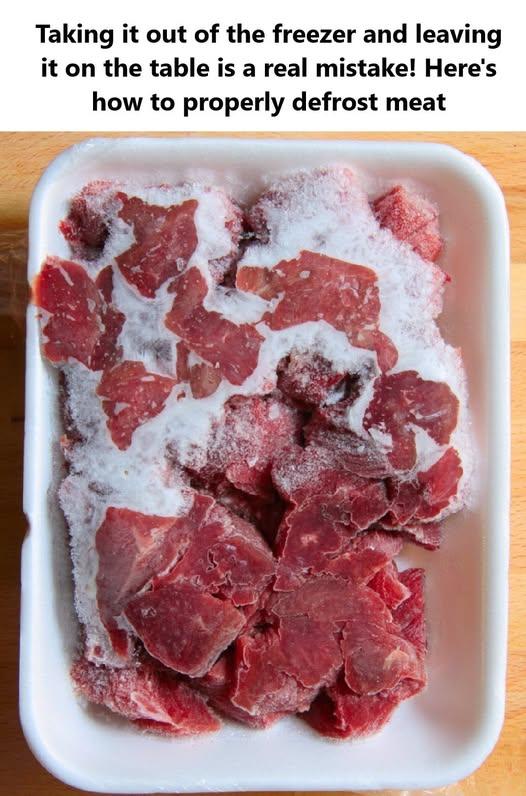ADVERTISEMENT
How to Defrost Meat: Expert Advice on the Correct Method, Even When You’re Short on Time
Defrosting meat might seem like a simple task, but if done improperly, it can lead to food safety issues and affect the texture and flavor of your dish. Whether you’ve forgotten to take the meat out of the freezer ahead of time or you’re looking for the fastest way to defrost, knowing the correct methods for safely thawing meat is crucial. Here’s expert advice on how to defrost meat the right way, even when you’re in a hurry!
Why Defrosting Meat Properly Matters
When meat is frozen, its cells form ice crystals. If meat is thawed incorrectly, these crystals can rupture, leading to a loss of moisture and impacting the texture. Moreover, improper thawing can promote bacterial growth, which could lead to foodborne illness. The good news is that with the right methods, you can preserve the quality and safety of your meat, even when you’re in a time crunch.
1. The Best Method: Defrosting in the Refrigerator
The refrigerator is the safest place to defrost meat, as it keeps the meat at a consistent, safe temperature (below 40°F or 4°C) to prevent bacterial growth. This method requires the most time, but it is the best choice for preserving flavor, texture, and safety.
How to Do It:
- Step 1: Place the meat in a shallow pan or dish to catch any liquid that may drip.
- Step 2: Set the pan in the refrigerator.
- Step 3: Allow the meat to defrost for 12–24 hours, depending on the size and thickness of the cut. For example, smaller cuts like chicken breasts or ground beef will defrost in 12 hours, while larger roasts or whole chickens may take 24 hours or more.
Pro Tip: If you’re defrosting multiple pieces of meat, make sure they are spaced out so air can circulate around them. Don’t stack them together.
2. The Quick Method: Defrosting in Cold Water
If you’re short on time and need to defrost meat more quickly, the cold water method is your best bet. It’s faster than the refrigerator method but still safe as long as the water stays cold. The key is to keep the meat in a sealed bag to prevent water from touching the meat, which could cause contamination.
How to Do It:
- Step 1: Place the meat in a leak-proof plastic bag. This will prevent water from soaking into the meat and ensure it stays safe.
- Step 2: Submerge the bagged meat in a bowl or sink of cold water.
- Step 3: Change the water every 30 minutes to keep it cold and speed up the process.
- Step 4: Small cuts may defrost in about 30 minutes to 1 hour, while larger cuts might take 2–3 hours.
Important: Never use hot or warm water, as this can bring the outer layers of the meat to unsafe temperatures, encouraging bacteria to grow.
For Complete Cooking STEPS Please Head On Over To Next Page Or Open button (>) and don’t forget to SHARE with your Facebook friends
ADVERTISEMENT
